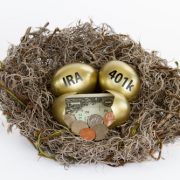What Is Retirement Investment Diversification Within a Self-Directed IRA?
One of the primary reasons investors turn to retirement accounts is diversification. But what does this term really mean? It’s something that every retirement investor should consider, even if they don’t yet know what their ultimate financial decisions are going to be. To answer what diversification is, we’re going to explain not only the concept behind diversification, but how Self-Directed IRAs can be an ideal vehicle for people who want to achieve true diversification within a retirement portfolio. Here’s what you’ll need to know.
The Definition of Diversification Within a Portfolio
Let’s get started with one of the most fundamental aspects of understanding diversification: its definition within the context of investing. Here’s what Investopedia has to say on the subject:
Diversification is a risk management strategy that mixes a wide variety of investments within a portfolio. A diversified portfolio contains a mix of distinct asset types and investment vehicles in an attempt at limiting exposure to any single asset or risk.
Think of diversification as the opposite of putting all of your eggs in one basket. Buying one stock, for example, would be a low-diversification strategy. If something bad should happen to that company, such as missing earnings, your entire portfolio would be affected.
With diversification, you mitigate risk by spreading your investments around. Rather than investing in a single stock, for example, you might invest in a stock fund. Many investors use mutual funds and index funds for this reason. In an index fund, an investor can own a fund that tries to replicate the performance of an “index” of stocks. This makes it easy to make diversified investments in sectors such as energy or tech.
But is stock diversification really diversification? For many Self-Directed IRA investors, the answer is no. Diversification sometimes means diversifying outside of one asset class. We’ll take a look at what that means next.
Diversification Across Asset Classes
One of the reasons that so many investors turn to Self-Directed IRAs is because it allows them to expand their retirement portfolio beyond just one asset class. An asset class is the category of assets, such as stocks or real estate. It’s possible for an investor to have a well-diversified fund of stocks, but if the stock market tanks, the investor is still limited to that single asset class.
Investing in different classes—real estate, precious metals, private companies, etc.—gives an investor peace of mind that even if something were to happen to the stock market, there would still be plenty of value to be found in the portfolio. However, the simple act of diversifying across asset classes isn’t all that an investor needs to do. When you self-direct, you also choose your own investments. That means making smart, thorough, well-researched investments on your own terms. The Self-Directed IRA—and the Self-Directed IRA administration with whom you work—are simply vehicles through which you can carry out these investments in your retirement portfolio.
Is It Time to Diversify with a Self-Directed IRA?
Because a Self-Directed IRA affords investors the ability to choose the asset classes they want (within the rules of retirement accounts), many investors turn to Self-Directed IRAs to broaden the horizons of a retirement portfolio. However, it’s worth remembering that this highly independent way of investing also means additional responsibility for you: you’re now choosing your own specific investments, hopefully with greater care.
Interested in learning more about Self-Directed IRAs? Contact American IRA, LLC at 866-7500-IRA (472) for a free consultation. Download our free guides or visit us online at www.AmericanIRA.com.







